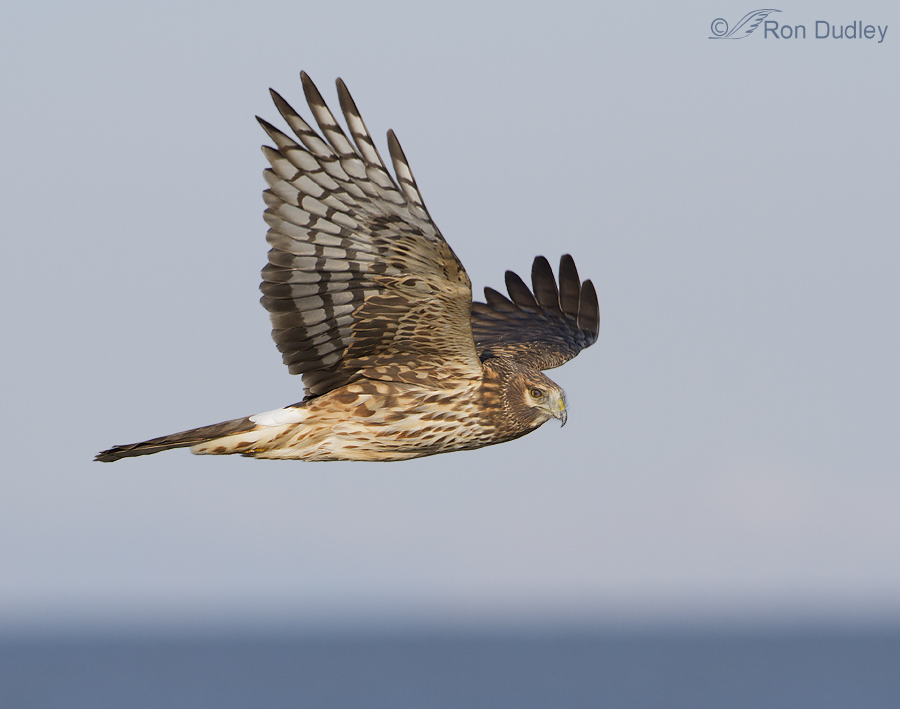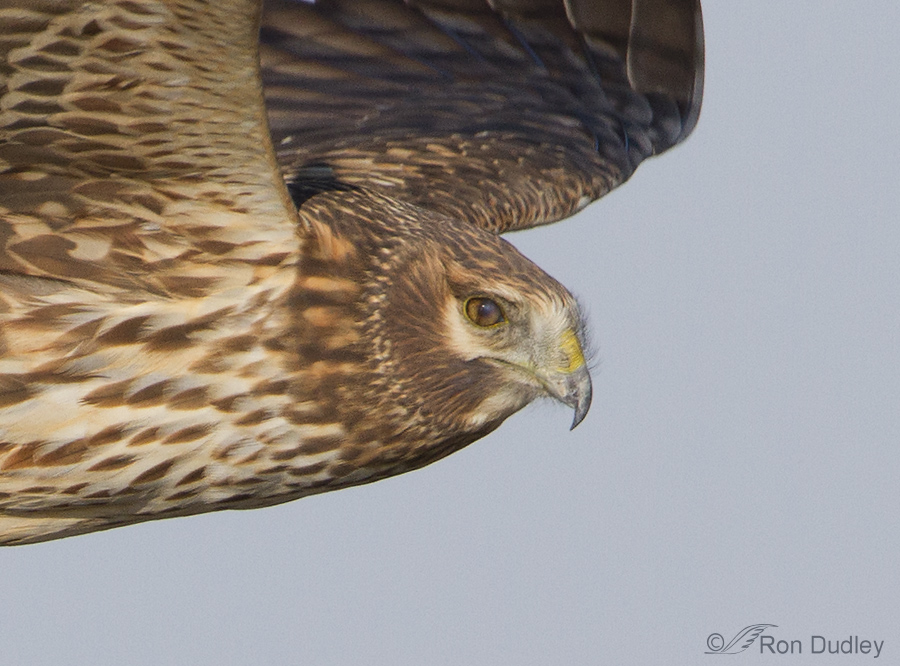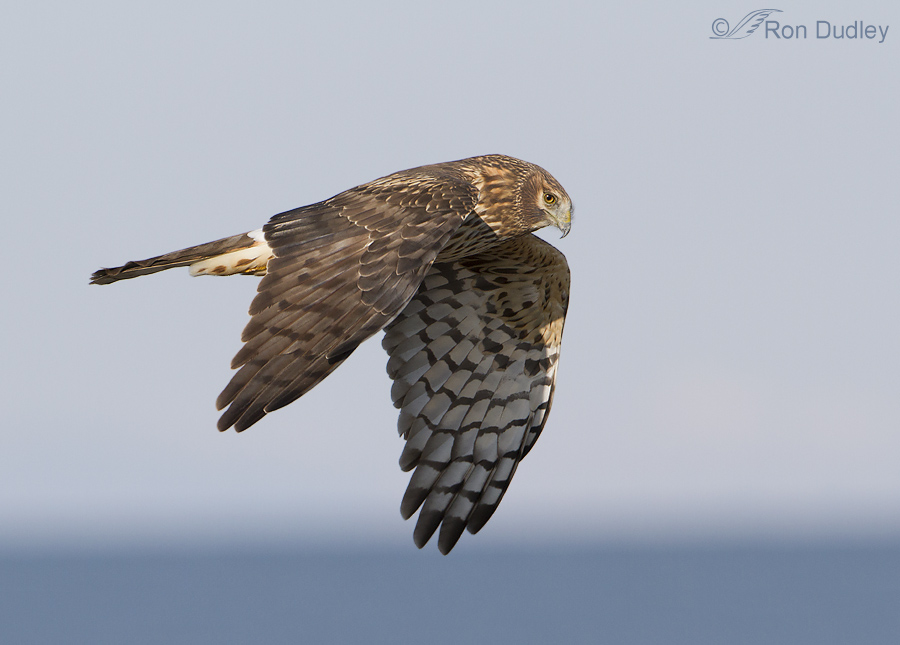Occasionally a Northern Harrier will come in close to the photographer as the hawk hunts the narrow confines of the causeway to Antelope Island.

1/2000, f/7.1, ISO 500, Canon 7D, 500 f/4, not baited, set up or called in
Which is exactly what this bird was doing in the winter of 2012. I like the lake in the background at bottom to help anchor the bird in the frame.
Sharp-eyed observers may notice something slightly funky about the right eye. I noticed it during processing and at first I thought the bird might have a slightly “blown” eye because it didn’t quite look like a closed nictitating membrane (nictitans).

But on closer inspection (a very large crop of the same image) it indeed turned out to be a half-closed nictitans. Depending on its color and opacity the membrane can look quite different from species to species. In harriers the membrane is quite transparent and clear so it is most apparent at the leading edge as it moves horizontally across the eye. It can be frustrating to get a shot that you like a lot otherwise but the membrane is completely or partially closed.
- Another thing this cropped version tells me is the quality of my Canon EF 500mm f/4L IS USM lens (which I have since traded off for the newer version which has even better image quality). This drastically cropped version of the previous image is only 4.47% of the original frame (.8 of 17.9 megapixels) and yet the detail is still very good, even to the point of being able to clearly see the individual rictal bristles on the face of a bird in flight. I was very pleased.

1/2000, f/7.1, ISO 500, Canon 7D, 500 f/4, canvas added for composition, not baited, set up or called in
But to partially make up for the nictitans shortcoming I caught the wings down and the membrane hidden in the very next frame.
With birds in flight it’s often difficult (if not impossible) to know the true flight angle of attack because there’s nothing else in the image that gives a clue as to what is absolutely level. But with a body of water at the bottom of the frame you know what true level is so during processing the image can be rotated (as I’ve done here) to correct the angle. That shows me that this harriers actual angle of attack was fairly steep, considering that it was flying level and not maneuvering in any way – which is typical for harriers who (like many owls) are known for their buoyant flight.
Ron


So clear with great light in the first but to be truthful I was entranced with them all. I did not know about the nictitans.I always learn from you, thanks.
Just stunning — the photo, the feather patterns, the lake background, the bird’s posture in flight, just the whole shebang! Thanks for your sharing.
Beautiful work….so graceful
Fantastic shots Ron!
Charlotte
Thanks for the interesting information about the nictitans. I had no idea that some were transparent or that they move horizontally across the eye. I guess I only notice the opaque ones because they are more obvious (and often ruin an otherwise good shot).
Beauty and education in every post. Megathanks.
Thank you, Elephant’s Child.
I remember this bird…glad his eye was OK after all….close up is incredible!
Thanks very much, Patty.
That lens is indeed impressive!
Lovely images, as always. Not only do I enjoy the images, but also the habits and other info about the subject you impart with them. Thank you.
I appreciate the feedback, Prairie Chicken. Thank you.